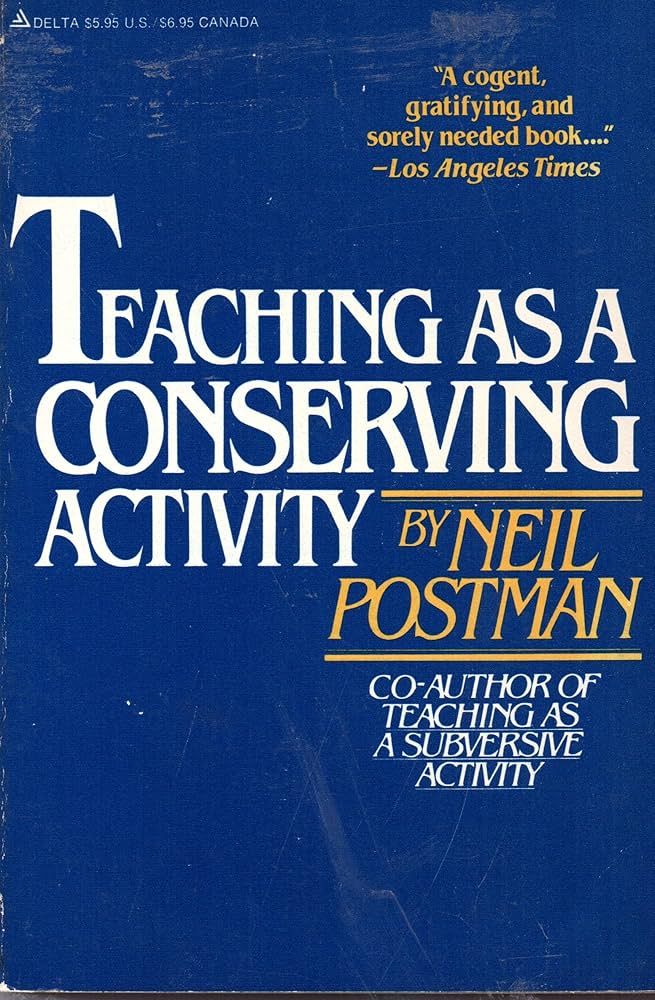Teaching as a Conserving Activity (1979)

In Teaching as a Conserving Activity, Neil Postman argues that schools should be conservatories of culture: places that keep alive language, stories, and standards of judgment. Rather than chasing every new device or educational fad, schooling should conserve what helps humans think clearly and live responsibly.
Postman contrasts a culture of novelty with a culture of memory. He proposes curricula that foreground semantics, history, and moral reasoning—so students can evaluate claims, not just process information. Teachers, in this view, are custodians of shared meanings who help students see why some questions matter more than others.
Education conserves the words and stories that let a culture remember what is worth loving, questioning, and defending.
Key Ideas from the Book
- School as Conservatory: Preserve linguistic clarity, historical memory, and standards of evidence.
- Against Fads: Beware technocentric reforms that confuse efficiency with purpose.
- Semantics First: Define terms; separate description from evaluation; test metaphors.
- Curriculum of Memory: Canon and common knowledge are tools for judgment, not mere tradition.
- Teacher’s Role: Model restraint, context, and care for language in a media-saturated world.
Why It Still Matters
Amid dashboards, trends, and rapid curriculum pivots, Postman’s vision reminds educators to ask: What are we conserving? The answer anchors schools to humane purposes—helping students inherit a language of judgment that outlasts platforms and fads.